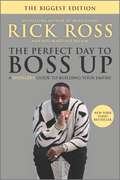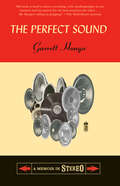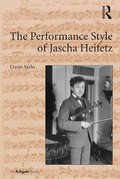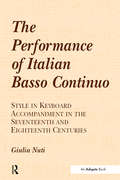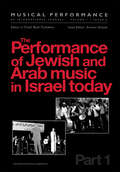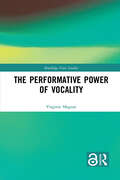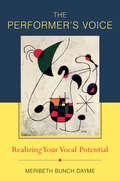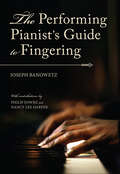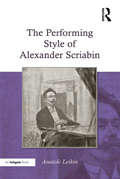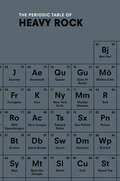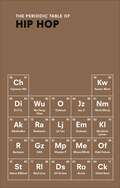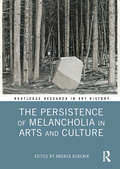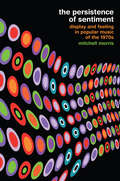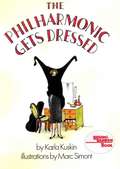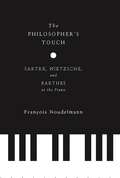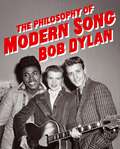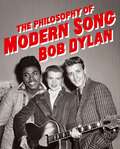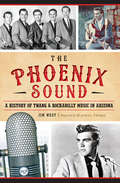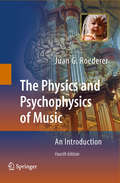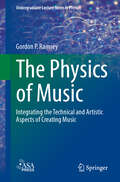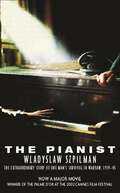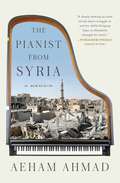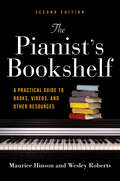- Table View
- List View
The Perfect Day to Boss Up: A Hustler's Guide To Building Your Empire
by Rick RossA captivating and inspiring guide to building an untouchable empire from mud to marble, no matter what obstacles stand in the wayRick Ross is a hip-hop icon and a towering figure in the business world, but his path to success was not always easy. Despite adversity and setbacks, Ross held tight to his vision and never settled for anything less than greatness. Now, for the first time, he shares his secrets to success, offering his own life as a road map to readers looking to build their own empire. Along the way he reveals: How to turn your ambition into action Tips for managing and investing your money Inside stories from his business and music ventures Why failure is central to success Secrets to handling stressful situations How to build the perfect team As Ross explains, &“It doesn&’t matter what&’s going on. Even the most dire situation is just another opportunity to boss up.&”Intimate, insightful and brimming with no-nonsense advice, The Perfect Time to Boss Up is the ideal book for hustlers everywhere.
The Perfect Sound: A Memoir in Stereo
by Garrett HongoGarrett Hongo’s passion for audio dates back to the Empire 398 turntable his father paired with a Dynakit tube amplifier in their modest tract home in Los Angeles in the early 1960s. But his adult quest begins in the CD-changer era, as he seeks out speakers and amps both powerful and refined enough to honor the top notes of the greatest opera sopranos. In recounting this search, he describes a journey of identity where meaning, fulfillment, and even liberation were often most available to him through music and its astonishingly varied delivery systems. <p><p> Hongo writes about the sound of surf being his first music as a kid in Hawai‘i, about doo-wop and soul reaching out to him while growing up among Black and Asian classmates in L.A., about Rilke and Joni Mitchell as the twin poets of his adolescence, and about feeling the pulse of John Coltrane’s jazz and the rhythmic chords of Billy Joel’s piano from his car radio while driving the freeways as a young man trying to become a poet. <p><p> Journeying further, he visits devoted collectors of decades-old audio gear as well as designers of the latest tube equipment, listens to sublime arias performed at La Scala, hears a ghostly lute at the grave of English Romantic poet John Keats in Rome, drinks in wisdom from blues musicians and a diversity of poetic elders while turning his ear toward the memory-rich strains of the music that has shaped him: Hawaiian steel guitar and canefield songs; Bach and the Band; Mingus, Puccini, and Duke Ellington. And in the decades-long process of perfecting his stereo setup, Hongo also discovers his own now-celebrated poetic voice.
The Performance Style of Jascha Heifetz
by Dario SarloThe violinist Jascha Heifetz (1901-1987) is considered among the most influential performers in history and still maintains a strong following among violinists around the world. Dario Sarlo contributes significantly to the growing field of analytical research into recordings and the history of performance style. Focussing on Heifetz and his under-acknowledged but extensive performing relationship with the Bach solo violin works (BWV 1001-1006), Sarlo examines one of the most successful performing musicians of the twentieth century along with some of the most frequently performed works of the violin literature. The book proposes a comprehensive method for analysing and interpreting the legacies of prominent historical performers in the wider context of their particular performance traditions. The study outlines this research framework and addresses how it can be transferred to related studies of other performers. By building up a comprehensive understanding of multiple individual performance styles, it will become possible to gain deeper insight into how performance style develops over time. The investigation is based upon eighteen months of archival research in the Library of Congress’s extensive Jascha Heifetz Collection. It draws on numerous methods to examine what and how Heifetz played, why he played that way, and how that way of playing compares to other performers. The book offers much insight into the ’music industry’ between 1915 and 1975, including touring, programming, audiences, popular and professional reception and recording. The study concludes with a discussion of Heifetz’s unique performer profile in the context of violin performance history.
The Performance of Italian Basso Continuo: Style in Keyboard Accompaniment in the Seventeenth and Eighteenth Centuries
by Giulia NutiBasso continuo accompaniment calls upon a complex tapestry of harmonic, rhythmic, compositional, analytical and improvisational skills. The evolving knowledge that underpinned the performance of basso continuo was built up and transmitted from the late 1500s to the second half of the eighteenth century, when changes in instruments together with the assertion of control by composers over their works brought about its demise. By tracing the development of basso continuo over time and across the regions of Italy where differing practices emerged, Giulia Nuti accesses this body of musical usage. Sources include the music itself, introductions and specific instructions and requirements in song books and operas, contemporary accounts of performances and, in the later period of basso continuo, description and instruction offered in theoretical treatises. Changes in instruments and instrumental usage and the resulting sounds available to composers and performers are considered, as well as the altering relationship between the improvising continuo player and the composer. Extensive documentation from both manuscript and printed sources, some very rare and others better known, in the original language, followed by a precise English translation, is offered in support of the arguments. There are also many musical examples, transcribed and in facsimile. Giulia Nuti provides both a scholarly account of the history of basso continuo and a performance-driven interpretation of how this music might be played.
The Performance of Jewish and Arab Music in Israel Today: A special issue of the journal Musical Performance
by Amnon ShiloahIsrael, with its highly heterogeneous immigrant society, offers to the observer a fascinating instance of multifaceted performance practice. Within a relatively limited area, there are numerous musical traditions and styles which encompass sacred and secular, old and new, folk and sophisticated forms. The ten contributions included in these issues of Musical Performance represent a discussion of the most significant traditions that were established during the period before 1948: the search for the establishment of a new and typically Israeli art and folk music; the attitude of the protagonists of this tendency toward the old exiled traditional heritage of the Jewish people, and the struggle of the immigrants after the creation of the State of Israel to ensure the survival of their musical tradtions as well as to cope with the new physical and cultural environment. Altogether the general scope of these contributions correspond to a large extent to major events which marked the m
The Performative Power of Vocality (Routledge Voice Studies)
by Virginie MagnatThe Performative Power of Vocality offers a fresh perspective on voice as a subject of critical inquiry by employing an interdisciplinary and cross-cultural approach. Conventional treatment of voice in theatre and performance studies too often regards it as a subcategory of actor training, associated with the established methods that have shaped voice pedagogy within Western theatre schools, conservatories, and universities. This monograph significantly deviates from these dominant models through its investigation of the non-discursive, material, and affective efficacy of vocality, with a focus on orally transmitted vocal traditions. Drawing from her performance training, research collaborations, and commitment to cultural diversity, Magnat proposes a dialogical approach to vocality. Inclusive of established, current, and emerging research perspectives, this approach sheds light on the role of vocality as a vital source of embodied knowledge, creativity, and well-being grounded in process, practice, and place, as well as a form of social and political agency. An excellent resource for qualitative researchers, artist-scholars, and activists committed to decolonization, cultural revitalization, and social justice, this book opens up new avenues of understanding across Indigenous and Western philosophy, performance studies, musicology, ethnomusicology, sound and voice studies, anthropology, sociology, phenomenology, cognitive science, physics, ecology, and biomedicine.
The Performer's Voice: Realizing Your Vocal Potential
by Meribeth DaymeAn essential guide to how the voice works; and how to realize its potential. Concise, accurate, and accessible, The Performer's Voice explains how the voice works and how to use it efficiently. Emphasizing the infinite potential of the human voice, this practical book enables vocal professionals to use their voices effectively to create dynamic performances. Written for people who use their voices every day; from singers, actors, and teachers to trial lawyers, ministers, and radio announcers; The Performer's Voice brings together the basic anatomy, physiology, technique, and performance skills required for effective use of the voice. Simple exercises and observations, designed for busy people to do in a short time, provide practical application. Anatomically correct drawings support concise, direct explanations. Taking a balanced, common sense approach, this book provides simple guidelines for using the voice healthily and imaginatively. For anyone who relies on the voice for a living,The Performer's Voice provides the essential tools for confident, imaginative and compelling performances.
The Performing Pianist's Guide to Fingering
by Joseph BanowetzThe Performing Pianist's Guide to Fingering, the much-anticipated companion to Joseph Banowetz's The Pianist's Guide to Pedaling, provides practical fingering solutions for technical musical passages. Banowetz contends that fingering choices require much thought and consideration and that too often these choices are influenced by historical traditions and ideas rather than by actual performance conditions. By returning to the unedited original compositions, he strives to help the advanced pianist think through the composer's musical intent and the actual performance tempo and dynamics when selecting the fingering. Banowetz also includes valuable contributions by Philip Fowke, who examines redistributions by Benno Moiseiwitsch in Rachmaninoff's compositions, and Nancy Lee Harper, who explores the often very different approaches to fingering found in keyboard music of the Baroque era. The Performing Pianist's Guide to Fingering will be useful to the advanced pianist and to instructors looking to guide students in improving this important art.
The Performing Style of Alexander Scriabin
by Anatole LeikinWhen Alexander Nikolayevich Scriabin's music was performed during his lifetime, it always elicited ecstatic responses from the listeners. Wilhelm Gericke, conductor of the Vienna opera, rushed backstage after one of Scriabin's concerts and fell on his knees crying, 'It's genius, it's genius...'. After the composer’s death in 1915, however, his music steadily lost the captivating appeal it once held. The main reason for this drastic change in the listeners’ attitude is an enormous gap existing between the printed scores of Scriabin’s music and the way the composer himself played his works. Apparently, what Scriabin's audiences heard at the time was significantly different from, and vastly superior to, modern performances that are based primarily on published scores. Scriabin recorded nineteen of his compositions on the Hupfeld and Welte-Mignon reproducing pianos in 1908 and 1910, respectively. Full score transcriptions of the piano rolls, which are included in the book, provide many substantial features of Scriabin's performance: exact pitches and their timing against each other, rhythms, tempo fluctuations, articulation, dynamics and essential pedal application. Using these transcriptions and other historical documents as the groundwork for his research, Anatole Leikin explores Scriabin's performing style within the broader context of Romantic performance practice.
The Periodic Table of HEAVY ROCK
by Ian Gittins'Jimi Hendrix was not so much an element in a Periodic Table of Heavy Rock as an entire elemental spectrum in a parallel universe.'Welcome to The Periodic Table of Heavy Rock! Instead of hydrogen to helium, here you'll find Smashing Pumpkins to Spinal Tap - 118 artists that have defined this music genre arranged following the logical ordering of The Periodic Table of Elements. Many of these elements are as unstable and reactive as their chemical counterparts. Shared style influences and band members are all mapped out here, along with the vast spectrum of sound this genre. Grunge rock through to hardcore, blues rock, psychedelic rock, progressive rock, arena rock, glam rock and glam metal, punk rock, blues metal, 80s new wave, comedy metal, thrash, death, intelligent AND nu-metal are all represented here. Includes: Rolling Stones, Led Zeppelin, The Who, Jimi Hendrix, AC/DC, Queen, Iron Maiden, Alice Cooper, Yes, Slipknot, Nirvana, ZZ Top, Sex Pistols, Meat Loaf, Queens of the Stone Age, the Doors, Pixies, Frank Zappa, Slade, Marilyn Manson, The Beatles and Spinal Tap and many, many more...
The Periodic Table of HIP HOP
by Neil KulkarniWelcome to The Periodic Table of Hip Hop. Instead of hydrogen to helium, here you'll find James Brown to Kendrick Lamar - 94 artists that have defined Hip Hop arranged following the logic of The Periodic Table of Elements.MCs, DJs, rappers and producers are the elements here, and this expert guide orders them to reveal their contrasts and connections, along with key movements and moments in the history of this music genre.Includes: James Brown, P-Funk, Kool Herc, Melle Mel, Sugarhill Records, Fab Five Freddy, Whodini, Run DMC, Rick Rubin, LL Cool J, Kendrick Lamar and Jay Z and many, many more...
The Persistence of Melancholia in Arts and Culture (Routledge Research in Art History)
by Andrea BubenikThis book explores the history and continuing relevance of melancholia as an amorphous but richly suggestive theme in literature, music, and visual culture, as well as philosophy and the history of ideas. Inspired by Albrecht Dürer’s engraving Melencolia I (1514)—the first visual representation of artistic melancholy—this volume brings together contributions by scholars from a variety of disciplines. Topics include: Melencolia I and its reception; how melancholia inhabits landscapes, soundscapes, figures and objects; melancholia in medical and psychological contexts; how melancholia both enables and troubles artistic creation; and Sigmund Freud’s essay "Mourning and Melancholia" (1917).
The Persistence of Sentiment: Display and Feeling in Popular Music of the 1970s
by Mitchell MorrisHow can we account for the persistent appeal of glossy commercial pop music? Why do certain performers have such emotional power, even though their music is considered vulgar or second rate? In The Persistence of Sentiment, Mitchell Morris gives a critical account of a group of American popular music performers who have dedicated fan bases and considerable commercial success despite the critical disdain they have endured. Morris examines the specific musical features of some exemplary pop songs and draws attention to the social contexts that contributed to their popularity as well as their dismissal. These artists were all members of more or less disadvantaged social categories: members of racial or sexual minorities, victims of class and gender prejudices, advocates of populations excluded from the mainstream. The complicated commercial world of pop music in the 1970s allowed the greater promulgation of musical styles and idioms that spoke to and for exactly those stigmatized audiences. In more recent years, beginning with the "Seventies Revival" of the early 1990s, additional perspectives and layers of interpretation have allowed not only a deeper understanding of these songs' function than when they were first popular, but also an appreciation of how their significance has shifted for American listeners in the succeeding three decades.
The Philharmonic Gets Dressed
by Karla KuskinThe 105 members of the Philharmonic Orchestra get ready for a performance. For children.
The Philosopher’s Touch: Sartre, Nietzsche, and Barthes at the Piano (European Perspectives: A Series in Social Thought and Cultural Criticism)
by François NoudelmannRenowned philosopher and prominent French critic François Noudelmann engages the musicality of Jean-Paul Sartre, Friedrich Nietzsche, and Roland Barthes, all of whom were amateur piano players and acute lovers of the medium. Though piano playing was a crucial art for these thinkers, their musings on the subject are largely scant, implicit, or discordant with each philosopher's oeuvre. Noudelmann both recovers and integrates these perspectives, showing that the manner in which these philosophers played, the composers they adored, and the music they chose reveals uncommon insight into their thinking styles and patterns.Noudelmann positions the physical and theoretical practice of music as a dimension underpinning and resonating with Sartre's, Nietzsche's, and Barthes's unique philosophical outlook. By reading their thought against their music, he introduces new critical formulations and reorients their trajectories, adding invaluable richness to these philosophers' lived and embodied experiences. The result heightens the multiple registers of being and the relationship between philosophy and the senses that informed so much of their work. A careful reader of music, Noudelmann maintains an elegant command of the texts under his gaze and appreciates the discursive points of musical and philosophical scholarship they involve, especially with regard to recent research and cutting-edge critique.
The Philosophy of Modern Song
by Bob DylanThe Philosophy of Modern Song is Bob Dylan&’s first book of new writing since 2004’s Chronicles: Volume One—and since winning the Nobel Prize for Literature in 2016. Dylan, who began working on the book in 2010, offers his extraordinary insight into the nature of popular music. He writes over sixty essays focusing on songs by other artists, spanning from Stephen Foster to Elvis Costello, and in between ranging from Hank Williams to Nina Simone. He analyzes what he calls the trap of easy rhymes, breaks down how the addition of a single syllable can diminish a song, and even explains how bluegrass relates to heavy metal. These essays are written in Dylan’s unique prose. They are mysterious and mercurial, poignant and profound, and often laugh-out-loud funny. And while they are ostensibly about music, they are really meditations and reflections on the human condition. Running throughout the book are nearly 150 carefully curated photos as well as a series of dream-like riffs that, taken together, resemble an epic poem and add to the work’s transcendence. In 2020, with the release of his outstanding album Rough and Rowdy Ways, Dylan became the first artist to have an album hit the Billboard Top 40 in each decade since the 1960s. The Philosophy of Modern Song contains much of what he has learned about his craft in all those years, and like everything that Dylan does, it is a momentous artistic achievement.
The Philosophy of Modern Song
by Bob DylanThe Philosophy of Modern Song is Bob Dylan’s first book of new writing since 2004’s Chronicles: Volume One—and since winning the Nobel Prize for Literature in 2016. <p><p> Dylan, who began working on the book in 2010, offers his extraordinary insight into the nature of popular music. He writes over sixty essays focusing on songs by other artists, spanning from Stephen Foster to Elvis Costello, and in between ranging from Hank Williams to Nina Simone. He analyzes what he calls the trap of easy rhymes, breaks down how the addition of a single syllable can diminish a song, and even explains how bluegrass relates to heavy metal. These essays are written in Dylan’s unique prose. They are mysterious and mercurial, poignant and profound, and often laugh-out-loud funny. And while they are ostensibly about music, they are really meditations and reflections on the human condition. Running throughout the book are nearly 150 carefully curated photos as well as a series of dream-like riffs that, taken together, resemble an epic poem and add to the work’s transcendence. <p><p> In 2020, with the release of his outstanding album Rough and Rowdy Ways, Dylan became the first artist to have an album hit the Billboard Top 40 in each decade since the 1960s. The Philosophy of Modern Song contains much of what he has learned about his craft in all those years, and like everything that Dylan does, it is a momentous artistic achievement.
The Phoenix Sound: A History Of Twang And Rockabilly Music In Arizona
by Jim WestIn 1956, a fresh-faced Sanford Clark recorded "The Fool" with guitarist Al Casey at Floyd Ramsey's small Phoenix recording studio. Written by local deejay Lee Hazlewood, the song became a top-ten Billboard hit nationwide and launched a new trailblazing era of Arizona music. Their success paved the way for other Phoenix acts and producers to chart national hits. Grammy-winning audio engineer Jack Miller started out in Ramsey's studio, and Hazlewood produced rock hall of famer Duane Eddy's debut album, Have "Twangy" Guitar, Will Travel. These early artists pioneered a sound that inspired Arizona's best musicians from Waylon Jennings and Buck Owens to Stevie Nicks and Linda Ronstadt. Join former radio and broadcast personality Jim West for the story and soundtrack to the early days of music in the Valley of the Sun.
The Physics and Psychophysics of Music
by Juan G. RoedererThis introductory text deals with the physical systems and biological processes that intervene in what we broadly call "music." It analyzes what physical properties of sound patterns are associated with what psychological sensations of music, and describes how these sound patterns are actually produced in musical instruments, how they propagate through the environment, and how they are detected by the ear and interpreted in the brain. Without using complicated mathematics, the author weaves a close mesh between the disciplines of acoustics, psychophysics, and neurobiology, offering an integral picture of not only the science of music, but also the "music of science", that is, the beauty and excitement of scientific research, reasoning and understanding. This text should be accessible to undergraduate-level students, whether from science, arts or engineering schools, but it should also be useful to professional musicians, physics educators, acoustical engineers and neuroscientists. The fourth edition incorporates recent research on tone generation in musical instruments and latest findings in brain science.
The Physics of Music: Integrating the Technical and Artistic Aspects of Creating Music (Undergraduate Lecture Notes in Physics)
by Gordon P. RamseyThis textbook is designed to help students and professionals understand the intimate connection between music and physics. The reader does not need prior background in music or physics, as the concepts necessary for understanding this connection are developed from scratch, using nothing more sophisticated than basic algebra which is reviewed for the reader. The focus is on connecting physics to the creation of music and its effect on humans. The reader will learn about the basic structure of music in relation to acoustics concepts, different musical instrument groups, how the room affects sound, and how sound travels from instruments to human ears to evoke an emotional reaction. Replete with exercises to hone students’ understanding, this book is ideal for a course on the physics of music and will appeal to STEM students as well as students, professionals, and enthusiasts in any field related to music and sound engineering.
The Pianist
by Anthea Bell Wladyslaw SzpilmanDramatic story of a pianists survival of World War II in Poland.
The Pianist
by Wladyslaw SzpilmanThe bestselling memoir of a Jewish pianist who survived the war in Warsaw against all odds.'We are drawn in to share his surprise and then disbelief at the horrifying progress of events, all conveyed with an understated intimacy and dailiness that render them painfully close... riveting' OBSERVEROn September 23, 1939, Wladyslaw Szpilman played Chopin's Nocturne in C-sharp minor live on the radio as shells exploded outside - so loudly that he couldn't hear his piano. It was the last live music broadcast from Warsaw: That day, a German bomb hit the station, and Polish Radio went off the air.Though he lost his entire family, Szpilman survived in hiding. In the end, his life was saved by a German officer who heard him play the same Chopin Nocturne on a piano found among the rubble. Written immediately after the war and suppressed for decades, THE PIANIST is a stunning testament to human endurance and the redemptive power of fellow feeling.'The images drawn are unusually sharp and clear... but its moral tone is even more striking: Szpilman refuses to make a hero or a demon out of anyone' LITERARY REVIEW
The Pianist from Syria: A Memoir
by Aeham AhmadAn astonishing but true account of a pianist’s escape from war-torn Syria to Germany offers a deeply personal perspective on the most devastating refugee crisis of this century.Aeham Ahmad was born a second-generation refugee—the son of a blind violinist and carpenter who recognized Aeham's talent and taught him how to play piano and love music from an early age. When his grandparents and father were forced to flee Israel and seek refuge from the Israeli–Palestinian conflict ravaging their home, Aeham’s family built a life in Yarmouk, an unofficial camp to more than 160,000 Palestinian refugees in Damascus. They raised a new generation in Syria while waiting for the conflict to be resolved so they could return to their homeland. Instead, another fight overtook their asylum. Their only haven was in music and in each other. Forced to leave his family behind, Aeham sought out a safe place for them to call home and build a better life, taking solace in the indestructible bond between fathers and sons to keep moving forward. Heart-wrenching yet ultimately full of hope, and told in a raw and poignant voice, The Pianist from Syria is a gripping portrait of one man’s search for a peaceful life for his family and of a country being torn apart as the world watches in horror.
The Pianist's Bookshelf, Second Edition: A Practical Guide to Books, Videos, and Other Resources
by Maurice Hinson Wesley RobertsOriginally published in 1997, The Pianist's Bookshelf, was, according to the Library Journal, "a unique and valuable tool." Now rewritten for a modern audience, this second edition expands into the 21st century. A completely revised update, The Pianist's Bookshelf, Second Edition, comes to the rescue of pianists overwhelmed by the abundance of books, videos, and other works about the piano. In this clear, easy-to-use reference book, Maurice Hinson and Wesley Roberts survey hundreds of sources and provide concise, practical annotations for each item, thus saving the reader hours of precious research time. In addition to the main listings of entries, such as "Chamber Music" and "Piano Duet," the book has indexes of authors, composers, and performers.A handy reference from the masters of piano bibliography, The Pianist's Bookshelf, Second Edition, will be an invaluable resource to students, teachers, and musicians.
The Pianist's Dictionary
by Maurice Hinson Wesley RobertsFrom A to Z to middle C: An &“essential reference&” for piano students, teachers, players, and music lovers, with hundreds of definitions (E.L. Lancaster, Alfred Music).The Pianist&’s Dictionary is a handy and practical reference dictionary aimed specifically at pianists, teachers, students, and concertgoers. Prepared by Maurice Hinson and Wesley Roberts, this revised and expanded edition is a compendium of information gleaned from a combined century of piano teaching. Users will find helpful and clear definitions of musical and pianistic terms, performance directions, composers, pianists, famous piano pieces, and piano makers. The authors&’ succinct entries make The Pianist&’s Dictionary the perfect reference for compiling program and liner notes, studying scores, and learning and teaching the instrument. &“This new edition is a go-to source for piano scholars and students for quick information on musical terms, pianists, major works in the piano repertoire, piano manufacturers, and more . . . comprehensive, easy to use.&” —Jane Magrath, University of Oklahoma
